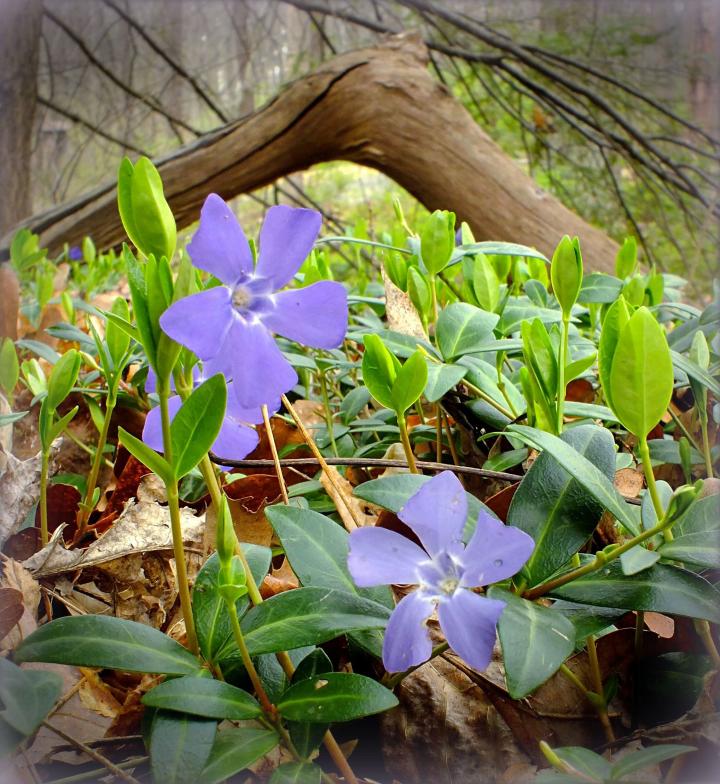 Photo by Nicholas A. Tonelli: Wikimedia Commons
Photo by Nicholas A. Tonelli: Wikimedia Commons
Myrtle (Vinca spp.) is among the hardiest of evergreen ground covers, hardy to Zone 4 and growing as far north as Canada. It can be invasive in certain areas.
Myrtle, Also Called Vinca or Periwinkle
Its bright-green leaves darken with the season, sometimes taking on a bronze tone under the winter sun. Lavender-blue or white flowers appear in the spring and sporadically all season.
- Spring and early fall are considered the best times to plant myrtle.
- It prospers in dappled sunlight but will also grow in full sun and even in dense shade.
- Use it instead of mulch under trees and shrubs to control weeds, or plant it in difficult-to-mow areas. Myrtle’s tenacious root system makes it an ideal choice for controlling erosion on steep banks.
- Prepare the ground by tilling in a one-inch layer of peat moss or compost and an application of complete 5-10-5 fertilizer to a depth of six inches.
- Space the young plants or divisions about eight inches apart. When you are finished, soak the entire planting, and mulch the area lightly with pine needles or bark.
- Water and weed the planted area frequently during its first season. Soon new shoots will spread out and root into the spaces between the plants, spreading joy all over the ground.
Myrtle Folklore: The Sorcerer’s Violet
A thousand years ago, the sorcerer’s violet, what we now call periwinkle, vinca, or myrtle, was shrouded in superstition:
- English herbalists believed that the trailing evergreen ground cover could be gathered only on the 1st, 9th, 11th, or 13th day of the Moon by a person cleansed of all impurities.
- Those who carried the plant believed that they were protected from the devil and safe from the bites of rabid dogs and venomous serpents.
- The Scots named this powerful plant joy-of-the-ground. They believed that marital bliss would be ensured if the leaves were ground to powder and taken at meals in a freshly picked houseleek that contained worms. (We have a hunch that a lot of Scottish couples endured unhappy marriages rather than brave the cure.)






 Photo by Nicholas A. Tonelli: Wikimedia Commons
Photo by Nicholas A. Tonelli: Wikimedia Commons